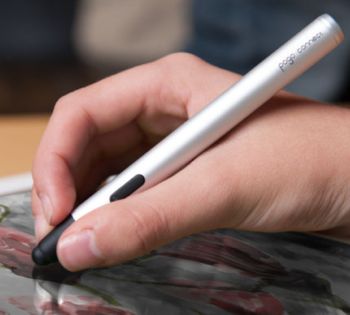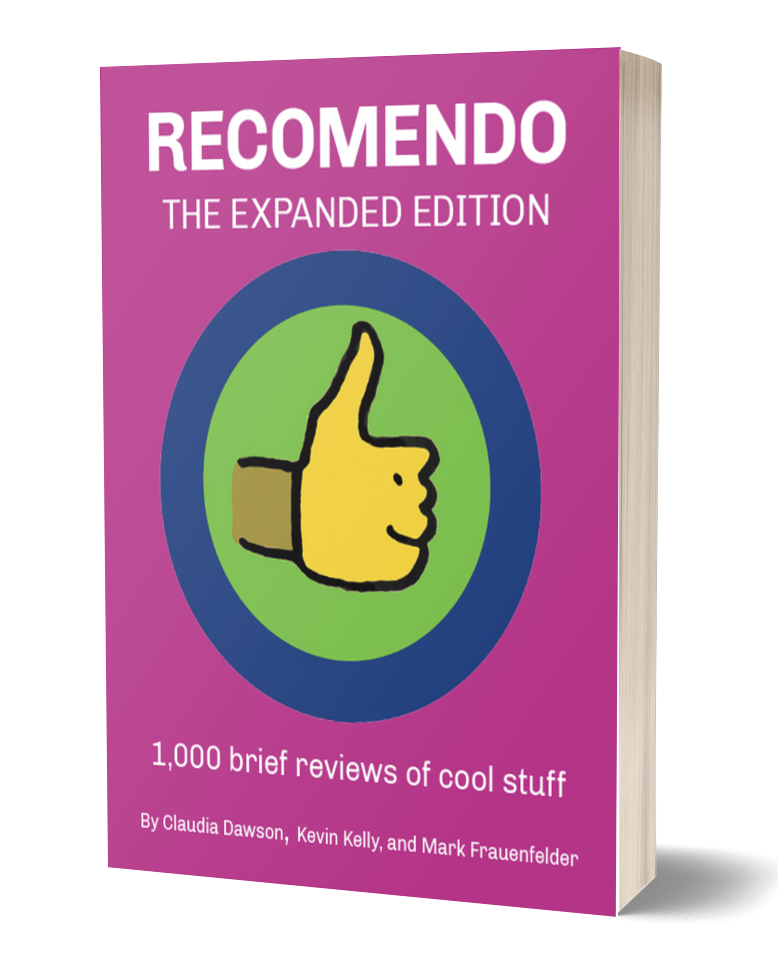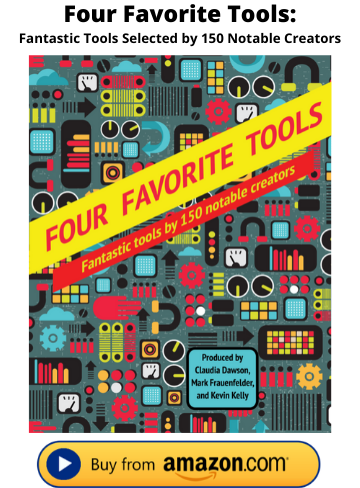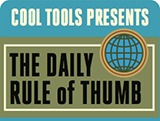30 June 2025
Domes & Yurts
Tools for Possibilities: issue no. 144

Modified geodesic dome
The hexayurt is an update on Buckminster Fuller’s geodesic dome and is a sturdy, affordable, easy-to-build temporary shelter. The geometry has been adjusted slightly to make it easier to build domes from materials like plywood, insulation, plastic, cardboard and more. The hexayurts are made from only one kind of triangle: an 8′ x 8′ isosceles triangle, rather than the strangely-shaped triangles which are standard for Fuller-style geodesic domes. They are not strictly geodesic, either, but it doesn’t seem to matter much in practice. The slightly stiff, angular lines look a lot like any other dome.
The most common place to see hexayurts is at Burning Man. The first one was built there in 2003, and was only a little bigger than a tent. There now range in size from 50 to nearly 500 square feet. A typical year at Burning Man will see a hundred or so of the silver huts lined up on the playa.
The design is public domain and build-it-yourself. People using the shelter for Burning Man usually buy the materials (about $300) ahead of time, including mail ordering the hard-to-find extra wide tape which is used to hold the shelter together. It takes about a day’s worth of effort to cut out the roof pieces, playa-proof the edges and do a test assembly. Putting the hexayurt together on the playa typically takes a small group of people about two hours and can be a struggle if there is wind or a dust storm which coats all the pieces in a fine layer of tape-defeating dust.
The joy of the thing is a building which stays relatively cool in the desert. The shiny surface of the hexayurt reflects away a lot of the sun’s heat, and a mix of pump sprays, swamp coolers and even the occasional air conditioner make the inside quite habitable even in the middle of the day when tents are far too hot for comfort. There are lots of plans and instructional videos on the Hexayurt web site, and handy people seem to have little difficulty putting them up.
A few simpler units, made from plywood, have been tested by local charities in Sri Lanka and Haiti. The jury is still out on whether this shelter will be useful beyond recreational use in the desert, but field trials are underway. — Howard Rheingold and Vinay Gupta

How to build a seasonal tent-cabin
Although I have never made a yurt, but I’d like to. This book tells you how. It assumes you have more time than money.
A yurt is a temporary tent house. It’s not really portable. The Mongolian version weighs 200 pounds — strong wooden frame covered in thick felt. If you really want portable, get a modern dome tent. But if you want a compact summer house, a cabin, a seasonal shelter encased in the mythical round, then a yurt could be perfect since you can make one of these yourself, with the added bonus that you can move it if you have to.
This book is an update of a 1980s classic. It takes the hippie approach. The drawings are all you need. Their instructions are rough, approximate, but satisfyingly visual. The book is motivational simply by being clear and rustic. Precision is not required, craft-smarts are. It assumes you are a do-it-yourself person. —KK
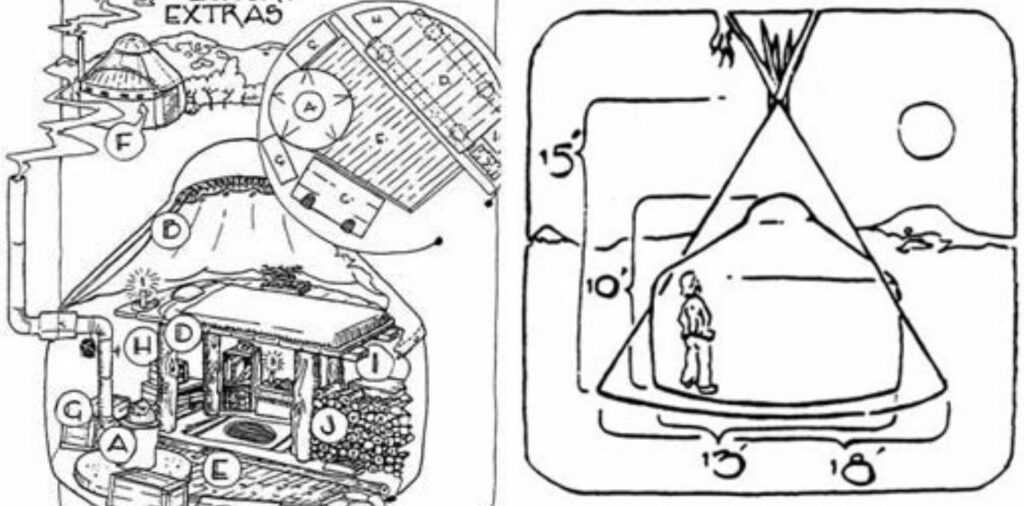
- When nomads gather, the topic of tipi vs. ger/yurt may surface. It’s a circular argument. Both are functional and beautiful; the pros and cons balance out. Choose the lodge that best fits your situation and personality.
The straightforwardness of the tipi, its pyramidal shape, the feeling of infinity inside looking up at the apex of the cone, make this Native American design a masterpiece. Because of the slope of the roof, the tipi can shed rain and handle a snow load better than a yurt.
On the other hand, the basket-like frame of the ger culminates at the smokehole, the crown, the tono. A low ceiling makes it easy to heat and the short poles fit on or in most vehicles. The straight wall of the yurt give you as much head space as floor space, unlike the tipi.
As some kind of comparison, this drawing shows outlines of an 18-foot tipi and a 13-foot yurt, both using the same amount of cover material (33 yards, 6 feet wide).

Best dome resource
Domes are the most efficient way to build a shelter, covering the most space with the least material. But all domes leak in the rain (ask anyone who has lived in one). Yet, because they can be erected quickly, cheaply, and make wonderful, uninterrupted, open, almost magical, spaces inside, domes are perfect where it does not rain. Or on a temporary basis. Or both. Like Burning Man.
Once popular in the 1970s as alternative housing, then abandoned as impractical a decade later, domes are now in a resurgence because they are nearly ideal structures for arid and temporary shelters at Burning Man. This instant city now sports more domes than anywhere else in the world, and many of these are quite large. Considering how vast they are, it is amazing they can be thrown up in a few days by a small dedicated crew. And then be re-erected the next year.
You can use any set of long uniform pieces for the structs of a dome, from 2x4s, to electrical conduit pipe. The key critical pieces are the hubs which connect the structs, and the strut lengths. These must have a mathematical precision, and their dimensions vary by the size and variation of the dome species.
Therefore if you want to build a geodesic dome structure, you need to be able to construct strong hubs accurately. Domerama is the guide you need. This website shows you how to calculate struct lengths and how to make (or where to buy) dependable hub connectors. Using this site many amateurs have successfully built domes that worked the first time; you’ll need help: remember this is a very math-intensive endeavor.
The site has tons of materials on the varieties of domes, erecting domes (not as easy as you think), designing them, what to use as coverings, and introduces global dome culture. It is the best place to keep up on dome innovations: one cool new idea is to shrink wrap domes. Find out how here. Domerama is better than any current book on domes by far. — KK
- Advantages of shrink wrap covering:• Will hold up under extreme weather conditions
• Translucent to let a large amount of light inside the geodesic dome structure
• Easy to repair, simple to create ventilation in the form of windows
• Strong enough to handle freeway and railway speeds
• Seams bond through heat, creating a seamless containment
• Will last up to 2 years in fully exposed outdoor conditions - Tyvek for covering geodesic domes:Noise factor: when the wind hits the Tyvek® covered dome there may be flapping and so a lot of noise at high winds. Hard structure Tyvek® (the one you normally find at the hardware store) is stiff and noisy when new, but if you put the Tyvek® in a washing machine on the delicate cycle with no detergent for 2-3 cycles, it comes out soft and much more fabric-like. Washing this type of Tyvek® does not seem to affect the water resistance but can cause some shrinkage. 5% should be added to measurements to allow for shrinkage if you are going to wash your Tyvek® .
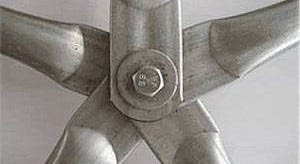
- This is the classic way to connect geodesic struts together. A hole is drilled in the flattened ends then bolted together.To accommodate a drilled hole into your struts, the length of the strut needs to be longer.For example a 36 inch pipe/conduit strut will need to be extended at both ends to drill holes. A rule of thumb is to add 2 X 3/4 inch = 1.5 inches (or about 8cm) more to all struts. That means the center of the holes would need to be drilled 3/4″ from each strut end.
- Domekit.cc is a project looking to make dome building simple and fun. They developed a hub connector featuring a robust ball-and-socket joint and an integrated thumbscrew that securely locks the strut to the node.These 3D-printed connectors are made in small batches in workshops and garages across the USA by fabricators with open-source 3D printers like the Makerbot. The principal fabricator for the 3D-printed connectors is Mark Cohen, who operates five 3D printers out of his garage in Brooklyn:This is the Starplate system offered by Stromberg’s. Starplates are steel plates, with channels to hold 2×2′s, 2×3′s or 2×4′s. You simply drill holes in each end of 25 struts of equal length and bolt them into the 11 star plates to build a solid, mini-dome framework in a couple of hours.
Once a week we’ll send out a page from Cool Tools: A Catalog of Possibilities. The tools might be outdated or obsolete, and the links to them may or may not work. We present these vintage recommendations as is because the possibilities they inspire are new. Sign up here to get Tools for Possibilities a week early in your inbox.
06/30/2529 June 2025
How to find purpose/Kagi/Track your natural energy
Recomendo - issue #468
How to find purpose
The purpose of your life is to discover the purpose of your life. If that sounds recursive, it is. No one has pushed harder on untangling that strange loop than Dan Pink, whose professional career has been trying to illuminate the way for ordinary folks to find their drive and purpose. He recently crafted a 10-minute video – How to Find Your Purpose – with clear, actionable steps you can take if stuck. I agree 100% with his approach and recommendations. They really help. — KK
Kagi Search Engine
I switched from Google to Kagi a couple of months ago and can’t imagine going back. The results remind me of Google’s golden age, before ads took over. The uncluttered ad-free interface delivers high-quality results without the SEO spam that plagues Google. It has tons of customization features I’m still learning about. It’s $10 a month, but having a search engine aligned with user experience rather than advertising revenue is worth it. — MF
Track your natural energy patterns
I took the advice from this LifeProTip and tracked my natural energy and focus patterns for a week to figure out when I’m most productive. For me, it’s after 1 PM. In the mornings, even though I do everything “right”—sitting out in the sun, sipping coffee, and exercising—I still usually feel energetically dispersed and have brain fog for the first half of the day. Instead of getting frustrated or trying to force myself to focus, I decided to shift my approach. Now, I work on tasks that don’t require much brainpower in the morning and save the more demanding ones for the afternoon. This one change has made me feel less shameful or frustrated with my natural patterns and more accomplished each day. — CD
Quiet, powerful hair dryer
My wife started using this CNMSGM hair dryer. Compared to her old dryer, it’s much quieter, more powerful, and lighter (under 1 pound). It features a smart LED ring that changes color to indicate temperature mode (red for hot, orange for warm, green for soft, and blue for cool). The two magnetic attachments snap on easily. Some users on Amazon mention that the power cord is a bit short, but I measured it, and it’s 70 inches long, which is more than enough for our bathroom. — MF
Invisible ring resizer
I love wearing rings, but my fingers are smaller than average and it’s really hard to find rings below a size 5, so I’m often disappointed when shopping for fashion jewelry. I finally found a solution with this Invisible Ring Spacer by Yiruhe. I coat the inside of the ring with a resin liquid that hardens in two minutes under UV light, repeating the process until the ring fits perfectly. It’s straightforward, and if you mess up or want to remove it, you can just run the ring under warm water and peel off the resin easily. My only complaint is the smell of the resin, so I’ve been resizing my rings outside. — CD
Death clock
Part of the thrill of being alive is that we don’t know when we will die. However, I’ve found that knowing my statistical death age to be very clarifying, and it helps me focus on maximizing today. There’s a new AI-enhanced Death Clock that takes into account your lifestyle choices to give you a death date based on statistics. It’s quick and free on the web. Treat it as a hint rather than destiny. — KK
Sign up here to get Recomendo a week early in your inbox.
06/29/2527 June 2025
Book Freak 184: Happy Money
The Science of Happier Spending

Why It Matters
Research shows we often fail to spend money in ways that maximize our happiness. Happy Money, by Elizabeth Dunn & Michael Norton, provides a research-backed framework for getting more satisfaction from every dollar by changing how we spend rather than how much we have. The authors’ core principles offer actionable ways to transform spending habits for greater wellbeing.
Core Principles
Buy Experiences, Not Things
Spending money on experiences, such as travel, concerts, and learning new skills, provides more lasting happiness than material purchases. Experiences give us stories to tell, connect us to others, and become a meaningful part of our identity. While things get old, experiences grow richer in memory over time.
Make It a Treat
Abundance reduces appreciation. By deliberately limiting access to the things we enjoy — whether lattes or luxury cars — we can maintain their specialness and maximize pleasure. Small pleasures deliver more happiness when they’re occasional treats rather than everyday occurrences.
Buy Time
Trading money for more free time by outsourcing disliked tasks or reducing commute times can make us happier than buying more stuff. Yet people often fail to spend money to buy themselves more time, even when they can afford to do so. Making time-saving purchases helps combat feelings of time scarcity.
Try It Now
- Plan a novel experience with friends instead of buying a new gadget
- Pick one regular indulgence and make it a weekly treat rather than a daily habit
- Use a portion of your next paycheck to outsource an unpleasant task
- Pay upfront for future fun activities, then enjoy them feeling “free”
- Buy coffee for a coworker and observe how it boosts both of your moods
Quote
“If human happiness is even half as complicated as the stock market, there is little reason to assume that intuition provides a sufficient guide.”
06/27/2526 June 2025
Great Walking Cities/United Partnerships/Lifetime Park Pass
Nomadico issue #161
We hit 20,000 subscribers last week, so thanks to all of you for joining us! If you want to support our work and get access to quarterly info calls, please become a paid subscriber.
Top Walking Cities
This list from Guru Walks is not comprehensive since it only has data on destinations where that company operates, but if you’re looking for good walking cities, it’ll give you plenty of ideas. All of the top 30 are in Europe except for Marrakech, but then comes more variety with New York City, Tokyo, Mexico City, Medellin, Hanoi, Cartagena, Buenos Aires, and Cusco making a showing.
Historical Tech Tree
Want to find out when something was invented and what else arrived around the same time? Check out the Historical Tech Tree that lays it all out on a timeline. In case you were wondering, sunglasses have been around since 1750, wristwatches since 1810, and flashlights since 1899. (Suitcases and backpacks not listed, though the upright rollaboard suitcase didn’t appear until 1987.)
United Partners With JetBlue and Spotify
If you’re sitting on a lot of JetBlue points, you may want to hold onto them for a while because United and JetBlue are partnering up. Dates are fuzzy but at some point you’ll be able to use JetBlue miles to book a United flight and vice-versa. It’ll also mean more slots for United planes at JFK. Also, the United flight I was just on had some Spotify podcasts and the choices are going to expand to music and audiobooks under a new agreement.
Lifetime National Park Pass for Seniors
I visited Joshua Tree National Park last week and would highly recommend a visit if you’re anywhere near there. When I’m old enough I plan to pick up one of the greatest travel bargains on the planet: a lifetime U.S. National Parks pass for only $80. If you’re a citizen or legal resident 62 or older, buy it online here and wave it at entrance gates for the rest of your life.
A weekly newsletter with four quick bites, edited by Tim Leffel, author of A Better Life for Half the Price and The World’s Cheapest Destinations. See past editions here, where your like-minded friends can subscribe and join you.
06/26/2525 June 2025
What’s in my NOW? — Eric Maierson
issue #216
I am a freelance editor, writer, and producer and two-time Emmy winner. I love making interesting work with good people. I also love books and dogs. I run a newsletter that offers 5 great links every week. You can subscribe here:Fave 5 and my website is www.ericmaierson.com.
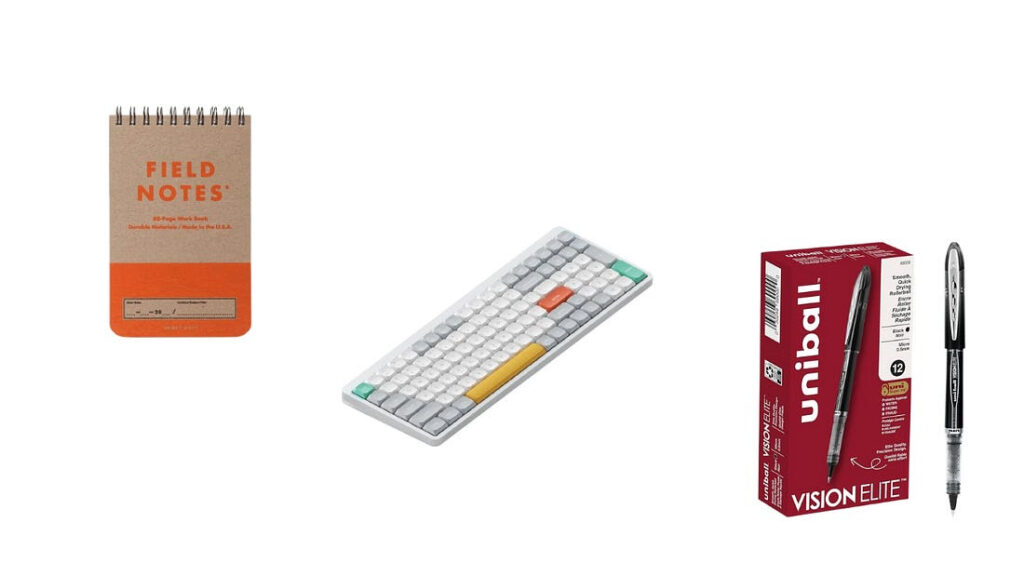
PHYSICAL
- Uniball Vision Elite Rollerball Pens – This is a great pen. It feels almost like painting. Its just a tiny bit messy at times, but so is life.
- Field Notes Brand Heavy Duty Edition – I adore Field Notes. They have a new styled notebook every quarter. You can subscribe and get a discount but I buy them thinking I won’t need the next one. I’m always wrong. I use the pocket notebooks for logging my day and the larger ones for gathering my thoughts.
- NuPhy Air96 V2 keyboard – I used the standard Mac keyboard forever. I didn’t realize how much I missed the tactile clacks. And its retro looks are so stylish.
DIGITAL
- Clean Shot X – supercharges the mac’s screen capture tool. Clean Shot makes it easy to annotate your screenshots, too. So helpful for drawing someone’s attention to areas of a website.
- Text Sniper – Extract text from images. Why is this tool not built in? You see text in an image and rather than having to retype, Text Sniper allows you take essentially an invisible screenshot, that loads the image’s text into your clipboard. Very accurate.
INVISIBLE
06/25/25“I am searching for that which is real of my heart, and which when completed I can stand humble to one side of and say: ‘This is it, this is how I feel, this is my honest interpretation of the world; this is not influenced by money, or trickery, or pressure…except the pressure of my soul.’” — W. Eugene Smith
24 June 2025
Craft for the Soul / The Coloring Book for Goths
Issue No. 72
CRAFT FOR THE SOUL SHOWS US HOW TO CONSTANTLY GENERATE IDEAS AND CREATE COOL STUFF



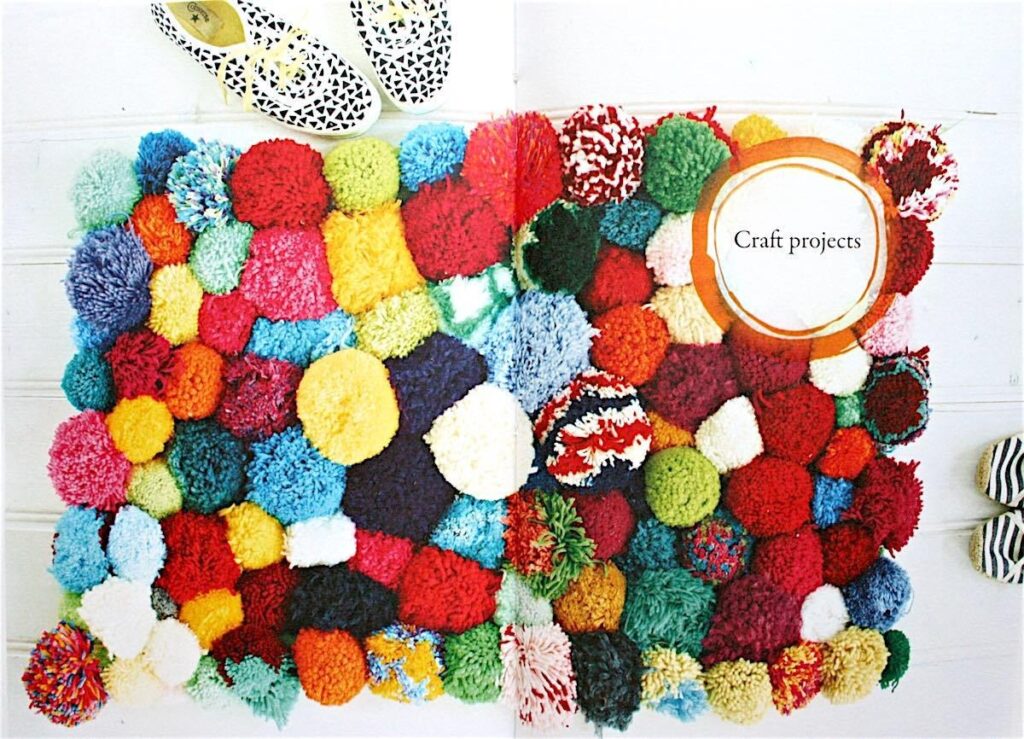


Craft for the Soul: How to Get the Most Out of Your Creative Life
by Pip Lincolne (author)
Penguin Books Australia
2016, 216 pages, 6 x 9 x 0.9 inches (hardcover)
When it comes to dishing out all there is to know about living a creative life, Pip Lincolne is certainly your go-to woman. She’s the author of several creative titles and the talent behind popular blog Meet Me at Mike’s. She is also the founder of multiple inspiring projects, including worldwide craft group Brown Owls and the eMag series The Good Stuff Guide.
For some, stumbling upon Pip Lincolne’s book, Craft for the Soul, might seem a bit like discovering a rare gem. Sure, there are plenty of books about creativity, as well as numerous books filled with cute craft projects, but Lincolne has seamlessly blended the two to produce a book that is bursting with all things creative. Nestled among her down-to-earth advice about morning rituals, keeping active for creativity’s sake, and how to constantly generate ideas (among plenty of other topics), you’ll also find her favorite delicious recipes, along with adorable illustrations, inspiring quotes, and crafty DIY projects.
The author stresses that each and every one of us are capable of filling our day-to-day lives with more creativity, happiness, and fun. And for those of you thinking you don’t have a creative bone in your bodies – the pang of inspiration you feel every time you turn a page will certainly have you thinking otherwise! – Melanie Doncas
THE COLORING BOOK FOR GOTHS: THE WORLD’S MOST DEPRESSING BOOK



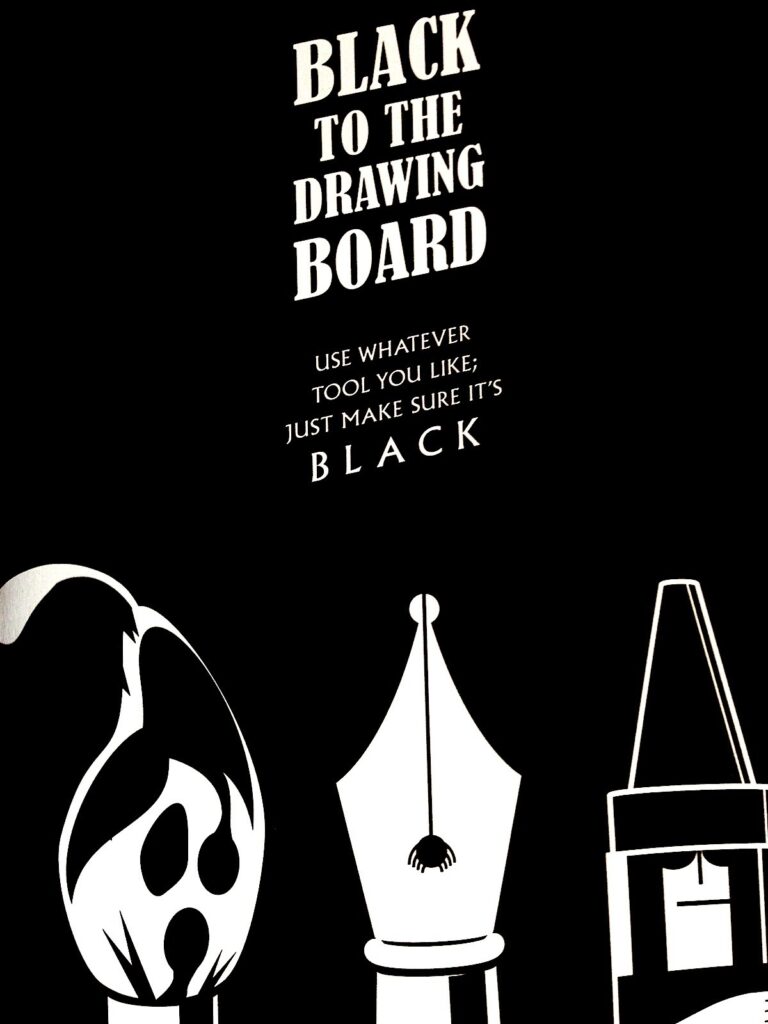
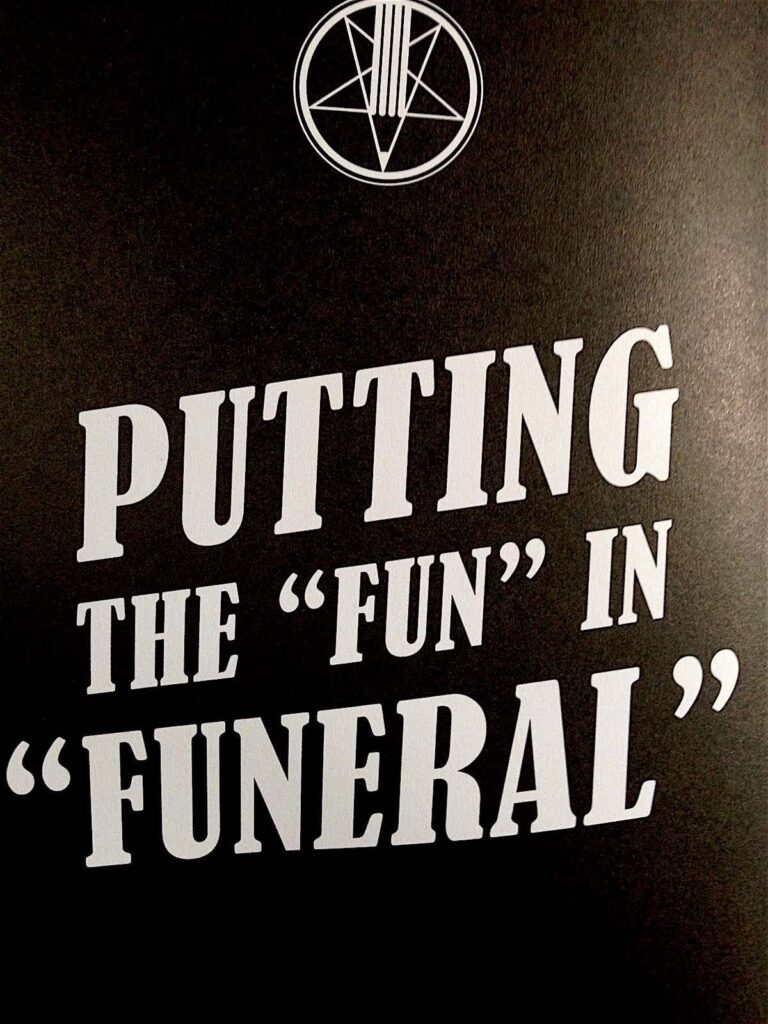

The Coloring Book for Goths: The World’s Most Depressing Book
by Tom Devonald
Atria Books
2016, 96 pages, 5.5 x 7.5 x 0.4 inches (paperback)
I wasn’t a big fan of high school, and my high school wasn’t a big fan of me. Weird, awkward, and music-obsessed, I was a concert-tee-clad speck in a sea of polo shirts and boat shoes. My 30th high school reunion was last July. A friend of mine from high school, who has a sadistic sense of humor, added me to the reunion Facebook page. One of the organizers for the event asked the group what songs they wanted to hear at the reunion. They all commented with one singular word, “Eighties.” The organizer tried their best to be diplomatic, and calmly asked which particular songs they wanted to hear, which then prompted the response of, “Eighties.” This went on for a while. Finally, someone commented with Starship’s “We Built This City.”
Needless to say, I didn’t attend the reunion. I try my best to avoid situations where I might accidentally hear one note of Starship’s “We Built This City.” In a strange coincidence, some of my friends who didn’t attend my high school organized a gothic/punk/industrial ‘club kid’ reunion the weekend prior to my high school reunion. During the early-to-mid ’80s, the midwestern city I lived in had a great alternative music club scene. We would spend most of our evenings dressed in black and coiffed outrageously, dancing to Bauhaus’ seminal track “Bela Lugosi is Dead,” Joy Division’s “Love Will Tear Us Apart,” amongst other doomy, angsty, deep cuts and non-hits. Going back to my hometown and dancing with old friends to great music was one of the highlights of 2015. Yes, I dressed in black.
Well, let’s segue into the review. The Coloring Book For Goths is a humorous coloring book requiring only one color: black. Geared to the current coloring book fad, it has one joke. Once you color it in, the page turns completely, thoroughly black. Featuring crows, black widow spiders, pentagrams, coffins, and crypts, and making references to Edgar Allen Poe, Robert Smith, and Friedrich Nietzsche, the book often only makes a passing reference to the goth subculture.
Some pages are funny and clever – a page of Metallica lyrics, pages exploring oblivion, the unknown, and the unknowable – but there are just as many embarrassing pages that belie a rudimentary understanding of the culture. An insecure killer whale? A polar bear in witness protection? Embarrassing tattoos? Unfortunately, someone enveloped in the goth culture would probably never purchase this book, and tourists to the culture probably won’t come away with a better understanding of it. It both embraces and pokes fun at the culture. Still, it was cute and made me snicker, because while we may have a serious demeanor, goths (and former goths) can take a joke. – S. Deathrage
06/24/25ALL REVIEWS
EDITOR'S FAVORITES
COOL TOOLS SHOW PODCAST
WHAT'S IN MY BAG?
25 June 2025

ABOUT COOL TOOLS
Cool Tools is a web site which recommends the best/cheapest tools available. Tools are defined broadly as anything that can be useful. This includes hand tools, machines, books, software, gadgets, websites, maps, and even ideas. All reviews are positive raves written by real users. We don’t bother with negative reviews because our intent is to only offer the best.
One new tool is posted each weekday. Cool Tools does NOT sell anything. The site provides prices and convenient sources for readers to purchase items.
When Amazon.com is listed as a source (which it often is because of its prices and convenience) Cool Tools receives a fractional fee from Amazon if items are purchased at Amazon on that visit. Cool Tools also earns revenue from Google ads, although we have no foreknowledge nor much control of which ads will appear.
We recently posted a short history of Cool Tools which included current stats as of April 2008. This explains both the genesis of this site, and the tools we use to operate it.





